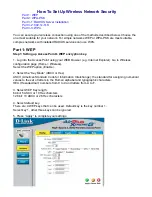
Chengdu Ebyte Electronic Technology Co., Ltd.
Copyright ©2012–2019
,
Chengdu Ebyte Electronic Technology Co., Ltd.
circuit needs to be added;
The antenna installation structure has a great influence on the performance of the module. Make sure that the
antenna is exposed, preferably vertically upward. When the module is installed inside the case, a high-quality
antenna extension cable can be used to extend the antenna to the outside of the case;
The antenna must not be installed inside the metal shell, which will greatly weaken the transmission distance;
It is recommended to add a 200R protection resistor to the RXD/TXD of the external MCU.
4.2 Software Design
This module is peripheral circuit, users can operate according to LLCC68 chip book;
DIO1, DIO2, and DIO3 are general-purpose IO ports, which can be configured with various functions; DIO2 can be
connected with TXEN, not with the IO port of MCU, and is used to control the RF switch transmission, see
LLCC68 manual for details, if not used, it can be left floating;
Internal use of 32MHz passive crystal, no pin control, software program control;
Difference between LLCC68 and SX1262/SX1268:
1.
SX1262/SX1268 support spreading factors SF5, SF6, SF7, SF8, SF9, SF10, SF11, SF12;
LLCC68 supports spreading factors SF5, SF6, SF7, SF8, SF9, SF10, SF11.
2.
Spread spectrum factor and receiver bandwidth that can be set by LLCC68:
LoRa® Rx/Tx, BW = 125 – 250 - 500 kHz,
LoRa®
,
SF = 5 - 6 - 7 - 8 - 9 for BW = 125 kHz,
LoRa®
,
SF = 5 - 6 - 7 - 8 - 9 - 10 for BW = 250 kHz,
LoRa®
,
SF = 5 - 6 - 7 - 8 - 9 - 10 - 11 for BW = 500 kHz;
































